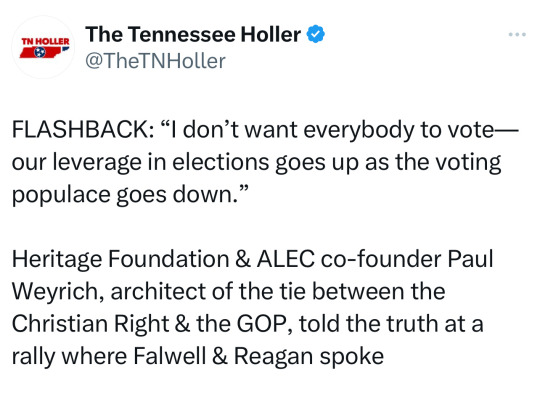#Jones Foundation
Explore tagged Tumblr posts
Text








icons based off my headcanons that i made for pride month! (a little late to posting on here- sorry bout that, LOL).
These are free to use!! I made a google drive folder with the originals and a transparent version for each, just in case anybody wants to add their own flags! No credit required- just don't remove my watermark!
Happy pride month, and shoutout to all lgbt people out there!!!
#fortnite#sunspot#raven team leader#peely#jonesy#the foundation#foundation fortnite#valeria fortnite#agent jones#meowscles#purradise meowscles#meezimoos art
296 notes
·
View notes
Text
OFFICIAL HOLMWOOD FOUNDATION CAST ANNOUNCEMENT!

The Holmwood Foundation are proud to present the cast and crew for our pilot episode: Across the Moors.
Rebecca Root as Maddie Townsend and Mina Harker, and Sean Carlsen as Jeremy Larkin and Jonathan Harker.
Other voice talents include:
Samuel Clemens as Arthur Jones Becky Wright as Thrall & Phone Voice Jessica Carroll as Newsreader Luke Kondor as Robert Swales and featuring Attila Puskas as Dracula
Joining our crew we have Samuel Clemens as Director, Katharine Armitage as our Script Editor and Benji Clifford as our Sound Engineer and Designer.
Also a special thank you to Alfie Shaw, Lisa McMullin, John Dorney, Tal Minear, Robert Taylor, David K Barnes and our sensitivity readers for their support in making the pilot a reality!
#The Holmwood Foundation#the holmwood foundation podcast#dracula#cast announcement#podcast#horror fiction podcast#Rebecca Root#maddie townsend#Sean Carlsen#Jeremy Larkin#Jonathan harker#Mina harker#Samuel Clemens#Arthur Jones#thrall#gothic horror#audio drama#production updates
150 notes
·
View notes
Text
Fourth of July is so funny cuz it’s the one time every year that people decades past their hetalia phase will wake up in a cold sweat and go “there’s only one character I can draw for this day… 👁️👁️💦”
#the haunting sounds of the American theme sneaking up on them the closer it gets to the fourth#like the jaws theme but it’s an eagle screech#eagles don’t even screech the usa’s a sham#this is a very usa centric post#I dunno maybe people in other countries wake up in a cold sweat on their foundation days and go#no… it’s time 👁️👁️💦#shoutout to all my American Hetalia fans waking up today and remembering that they’re hetalia fans#we will get through this together#I hope I get to glimpse fireworks this year#dude last year was such a bummer#I wanted to do sparklers in the backyard but no one wanted to join me so it was just me doing em myself while my family kept trying to#convince me to come back inside :(((#then my dad went hey this year we should get fireworks#NO#no one can have fun cuz you guys were mean to me last year >:(#slash j btw it’s not a big deal I’m just salty lol#when you’re the only one full of whimsy in your family 😔#happy birthday America#get your shit together#❤️🤍💙#hetalia#aph america#hws america#alfred f jones
168 notes
·
View notes
Text

One of the most durable myths in recent history is that the religious right, the coalition of conservative evangelicals and fundamentalists, emerged as a political movement in response to the U.S. Supreme Court’s 1973 Roe v. Wade ruling legalizing abortion. The tale goes something like this: Evangelicals, who had been politically quiescent for decades, were so morally outraged by Roe that they resolved to organize in order to overturn it.


This myth of origins is oft repeated by the movement’s leaders. In his 2005 book, Jerry Falwell, the firebrand fundamentalist preacher, recounts his distress upon reading about the ruling in the Jan. 23, 1973, edition of the Lynchburg News: “I sat there staring at the Roe v. Wade story,” Falwell writes, “growing more and more fearful of the consequences of the Supreme Court’s act and wondering why so few voices had been raised against it.” Evangelicals, he decided, needed to organize.
Some of these anti- Roe crusaders even went so far as to call themselves “new abolitionists,” invoking their antebellum predecessors who had fought to eradicate slavery.
But the abortion myth quickly collapses under historical scrutiny. In fact, it wasn’t until 1979—a full six years after Roe—that evangelical leaders, at the behest of conservative activist Paul Weyrich, seized on abortion not for moral reasons, but as a rallying-cry to deny President Jimmy Carter a second term. Why? Because the anti-abortion crusade was more palatable than the religious right’s real motive: protecting segregated schools. So much for the new abolitionism.
Today, evangelicals make up the backbone of the pro-life movement, but it hasn’t always been so. Both before and for several years after Roe, evangelicals were overwhelmingly indifferent to the subject, which they considered a “Catholic issue.” In 1968, for instance, a symposium sponsored by the Christian Medical Society and Christianity Today, the flagship magazine of evangelicalism, refused to characterize abortion as sinful, citing “individual health, family welfare, and social responsibility” as justifications for ending a pregnancy. In 1971, delegates to the Southern Baptist Convention in St. Louis, Missouri, passed a resolution encouraging “Southern Baptists to work for legislation that will allow the possibility of abortion under such conditions as rape, incest, clear evidence of severe fetal deformity, and carefully ascertained evidence of the likelihood of damage to the emotional, mental, and physical health of the mother.” The convention, hardly a redoubt of liberal values, reaffirmed that position in 1974, one year after Roe, and again in 1976.
When the Roe decision was handed down, W. A. Criswell, the Southern Baptist Convention’s former president and pastor of First Baptist Church in Dallas, Texas—also one of the most famous fundamentalists of the 20th century—was pleased: “I have always felt that it was only after a child was born and had a life separate from its mother that it became an individual person,” he said, “and it has always, therefore, seemed to me that what is best for the mother and for the future should be allowed.”
Although a few evangelical voices, including Christianity Today magazine, mildly criticized the ruling, the overwhelming response was silence, even approval. Baptists, in particular, applauded the decision as an appropriate articulation of the division between church and state, between personal morality and state regulation of individual behavior. “Religious liberty, human equality and justice are advanced by the Supreme Court abortion decision,” wrote W. Barry Garrett of Baptist Press.
So what then were the real origins of the religious right? It turns out that the movement can trace its political roots back to a court ruling, but not Roe v. Wade.
In May 1969, a group of African-American parents in Holmes County, Mississippi, sued the Treasury Department to prevent three new whites-only K-12 private academies from securing full tax-exempt status, arguing that their discriminatory policies prevented them from being considered “charitable” institutions. The schools had been founded in the mid-1960s in response to the desegregation of public schools set in motion by the Brown v. Board of Education decision of 1954. In 1969, the first year of desegregation, the number of white students enrolled in public schools in Holmes County dropped from 771 to 28; the following year, that number fell to zero.
In Green v. Kennedy (David Kennedy was secretary of the treasury at the time), decided in January 1970, the plaintiffs won a preliminary injunction, which denied the “segregation academies” tax-exempt status until further review. In the meantime, the government was solidifying its position on such schools. Later that year, President Richard Nixon ordered the Internal Revenue Service to enact a new policy denying tax exemptions to all segregated schools in the United States. Under the provisions of Title VI of the Civil Rights Act, which forbade racial segregation and discrimination, discriminatory schools were not—by definition—“charitable” educational organizations, and therefore they had no claims to tax-exempt status; similarly, donations to such organizations would no longer qualify as tax-deductible contributions.
On June 30, 1971, the United States District Court for the District of Columbia issued its ruling in the case, now Green v. Connally (John Connally had replaced David Kennedy as secretary of the Treasury). The decision upheld the new IRS policy: “Under the Internal Revenue Code, properly construed, racially discriminatory private schools are not entitled to the Federal tax exemption provided for charitable, educational institutions, and persons making gifts to such schools are not entitled to the deductions provided in case of gifts to charitable, educational institutions.”
Paul Weyrich, the late religious conservative political activist and co-founder of the Heritage Foundation, saw his opening.
In the decades following World War II, evangelicals, especially white evangelicals in the North, had drifted toward the Republican Party—inclined in that direction by general Cold War anxieties, vestigial suspicions of Catholicism and well-known evangelist Billy Graham’s very public friendship with Dwight Eisenhower and Richard Nixon. Despite these predilections, though, evangelicals had largely stayed out of the political arena, at least in any organized way. If he could change that, Weyrich reasoned, their large numbers would constitute a formidable voting bloc—one that he could easily marshal behind conservative causes.
“The new political philosophy must be defined by us [conservatives] in moral terms, packaged in non-religious language, and propagated throughout the country by our new coalition,” Weyrich wrote in the mid-1970s. “When political power is achieved, the moral majority will have the opportunity to re-create this great nation.” Weyrich believed that the political possibilities of such a coalition were unlimited. “The leadership, moral philosophy, and workable vehicle are at hand just waiting to be blended and activated,” he wrote. “If the moral majority acts, results could well exceed our wildest dreams.”
But this hypothetical “moral majority” needed a catalyst—a standard around which to rally. For nearly two decades, Weyrich, by his own account, had been trying out different issues, hoping one might pique evangelical interest: pornography, prayer in schools, the proposed Equal Rights Amendment to the Constitution, even abortion. “I was trying to get these people interested in those issues and I utterly failed,” Weyrich recalled at a conference in 1990.
The Green v. Connally ruling provided a necessary first step: It captured the attention of evangelical leaders , especially as the IRS began sending questionnaires to church-related “segregation academies,” including Falwell’s own Lynchburg Christian School, inquiring about their racial policies. Falwell was furious. “In some states,” he famously complained, “It’s easier to open a massage parlor than a Christian school.”
One such school, Bob Jones University—a fundamentalist college in Greenville, South Carolina—was especially obdurate. The IRS had sent its first letter to Bob Jones University in November 1970 to ascertain whether or not it discriminated on the basis of race. The school responded defiantly: It did not admit African Americans.
Although Bob Jones Jr., the school’s founder, argued that racial segregation was mandated by the Bible, Falwell and Weyrich quickly sought to shift the grounds of the debate, framing their opposition in terms of religious freedom rather than in defense of racial segregation. For decades, evangelical leaders had boasted that because their educational institutions accepted no federal money (except for, of course, not having to pay taxes) the government could not tell them how to run their shops—whom to hire or not, whom to admit or reject.
The Civil Rights Act, however, changed that calculus.
(continue reading)
#politics#republicans#paul weyrich#abortion#religious riech#bob jones university#jerry falwell#christian nationalism#white supremacy#desegregation#project 2025#roe v wade#reproductive rights#reproductive justice#healthcare#brown v board of education#heritage foundation#moral majority#religious freedom#religion
194 notes
·
View notes
Text

The O5 Council of Recollection AU! I'm so happy to complete this. Character designing my beloved <3.
From the left to right, top to bottom, we have:
Gears, Light, Mann, Clef, Blackbird, Cowboy,
Abirt, Magnolia/Newbie, Secret Keeper, Maria Jones (RAISA), Senator and Lament.
They all sorta have their own lore and distinctive responsibilities in foundation!
#alt draws#scp#scp foundation#o5 council#recollection au#dr gears#sophia light#everett mann#dr clef#blackbird#o5-6#abirt kravitz#dr kravitz#o5-8#o5-9#maria jones#o5-11#agent lament
170 notes
·
View notes
Text
Secret Alliance AU
After over a month of just trying to edit this thing, the first chapter is FINALLY uploaded! It's not much but honestly I'm very proud of how the rest of the story is turning out! The whole premise is basically "What happens if Jones reaches out to the 7 earlier in the story?"
So, through anonymous messages, he feeds them information to help them thwart the IO! (and maybe makes some friends along the way!) This will be a long story(for me anyway. I'm using it as practice to get more comfortable finishing and lengthening some of my work!) (It was also an excuse to make backstories for the 7! and to make the Foundation say "The Legend", or "Legend" as many times as possible.)
#jonesdation#foundajones#agent jones#the seven fortnite#the foundation#the scientist#the origin#the order#the imagined#the paradigm#the visitor#the legend#fortnite rewrite#fortnite au#secret alliance au#fanfiction
37 notes
·
View notes
Text





site 600 staff relationship chart!! these guys are my world and me and my friend have been working on them for so long,,,
#if you have any questions about different agents or their relationships I will answer them and also be in love with you forever#maggie's art#evilverse#scp fanart#scp fandom#scp foundation#agent thompson#agent black#agent hart#agent monday#agent mishra#agent jamison#agent walker#agent riley#agent jones#factotum florence#agent saeueng#agent campbell#agent qasim
39 notes
·
View notes
Text





recent jonesdations (wrote the last one myself)
#2023#finished#fortnite#jones#foundation#jonesdation#idk whats wrong w my clip studio my images are coming out kinda low quality (FROWN)
61 notes
·
View notes
Text
I'd like to thanks Amy for reminding to Let art out of Discord Jail, because I do forget to




Part 3 and 4 of the characters things AND HAN PRITCHER REDESIGN BECAUSE I REALIZED I MESSED UP AND WANTED TO DO HIM JUSTICE!
#isaac asimov#asimov#foundation series#lucky starr series#david lucky starr#lucky starr#john bigman jones#han pritcher#bail channis#nini forgets things
10 notes
·
View notes
Text

The kisses continue
AMAZING character belongs to @sininply-a-moth !! 💥💥💥
#kissing booth#suffix jones#scp fandom#scp foundation#scp oc#scp#art#oc#oc art#scp oc art#request#WOOO#hand kiss#scp 231 4b
21 notes
·
View notes
Text
John Knefel at MMFA:
Former Trump adviser Steve Bannon and others in MAGA media have recently praised disgraced Sen. Joe McCarthy and his blacklists, a tactic that Project 2025 partner organization the American Accountability Foundation is attempting to bring to the White House should Donald Trump win in November. According to The Associated Press, AAF is planning to create and publicly post a list of “100 names of government workers to a website this summer to show a potential new administration who might be … ripe for scrutiny, reclassifications, reassignments or firings,” with a focus on “those in senior executive positions who could put up roadblocks to Trump’s plans for tighter borders and more deportations.”
The plan is reportedly underwritten by a $100,000 grant from conservative think tank The Heritage Foundation as part of Project 2025, its far-reaching and extreme effort to provide policy and personnel recommendations for a potential second Trump administration. One of Project 2025’s top priorities is the implementation of “Schedule F,” a scheme to remove job protections from federal workers by reclassifying career staffers as political appointees — a direct attack on federal unions that could be used to fire civil servants deemed insufficiently pro-Trump. AAF is one of more than 100 conservative organizations on Project 2025’s advisory board, and its initiative — synergistically dubbed Project Sovereignty 2025 — is the latest broadside against the 2.2 million people who work for the federal government. The AP article notes that the group’s list of what Heritage referred to as “anti-American bad actors” echoes the blacklist era of McCarthy, the disgraced anti-communist crusader whose name became synonymous with one of the most repressive periods in U.S. history.
[...] Project 2025’s Schedule F and AAF’s proposed blacklist are clear, direct descendants of the literal McCarthyism that MAGA media figures are so quick to praise. The McCarthy era saw massive purges of left-wing federal employees as part of the Cold War’s rightward shift in national politics, halting the potential for American social democracy and helping to plant the seeds for the neoliberal turn of the 1970s and the ensuing rise in inequality that accompanied it. McCarthy and fellow anti-communists like FBI Director J. Edgar Hoover also directed their oppressive tactics toward gay people — and those suspected or accused of being gay — who worked for the federal government during a period known as the Lavender Scare. McCarthy “directly linked homosexuality and Communism,” depicting gay people working in government as a national security threat. Historians estimate that between 5,000 and 10,000 federal workers were forced to resign during this period, often behind closed doors for fear of their gay identity — real or perceived — becoming public.
American Accountability Foundation, a Project 2025 partner, will enact a McCarthyist purge of the civil services if Donald Trump wins election again.
#Project 2025#Joseph McCarthy#Red Scare#Lavender Scare#Tom Jones#American Accountability Foundation#Donald Trump#Trump Administration#Schedule F#Civil Service#The Heritage Foundation#Kevin Roberts#Jack Posobiec#Laura Loomer#Stephen Bannon#J. Edgar Hoover#Francisco Franco#Trump Administration II
16 notes
·
View notes
Text

Project 2025 is the actual Republican platform – not the MAGA gibberish they'll be releasing in Milwaukee for public consumption.
Project 2025 is like a mashup of The Handmaid's Tale and Mein Kampf – but with a nod to 21st century public relations.
#project 2025#the heritage foundation#maga#republicans#fascism#donald trump#gop platform#clay jones#election 2024#vote blue no matter who
12 notes
·
View notes
Text

We've officially passed 25% on our Kickstarter campaign, so as promised, have some brand new sticker designs, including some (as yet) unseen characters!
#As always. These are just our designs for the characters.#If you have different headcanons for them they are just as valid!#the holmwood foundation#the holmwood foundation podcast#jeremy larkin#maddie townsend#arthur f jones#Dracula#Henri Martin#Jonny 3#thomas van helsing#jonathan harker#mina harker#art#podcast art#horror podcast#horror fiction podcast#sticker designs#kickstarter rewards
101 notes
·
View notes
Text

I present to you: a drawing of a bunch of senior personnel from the SCP Foundation.
#scp#scp foundation#scp character#scp community#metafoundation#dr moose#dr gears#dr kondraki#marion wheeler#dr cimmerian#agent strelnikov#dr clef#dr alto clef#dr light#dr king#kain pathos crow#maria jones#djkaktus#thaddeus xyank#shirley gillespie#dr calvin bold#randall house#site 17#phmcd#dr asheworth#dr dan redacted#jesse rivera#marcel sequitur#fanart#ran out of tags
88 notes
·
View notes
Text
Master list
Madness combat
Tricky reader pt 1
Tricky reader pt 2
Tricky reader pt 3
Hanks dream
Yandere Player Au pt 1
Yandere Player Au pt 2
Yandere Player Au pt 3
Oh the Dreams (Hank Reader)
Off(the game)
Creepypasta
Yandere Trenderman x mannequin reader
Pokepasta boys x lost silver reader
Pokémon
Twisted wonderland
Tarboy
Tarboy x tar reader
Tarboy x tar reader 2
Tarboy x tar reader 3
Tarboy x tar reader 4
Don’t hug me I’m scared(dhmis)
Five nights at Freddy’s(fnaf)
SCP foundation
Hetalia
Wander over yonder
Over the garden wall
Bad end friends
Gravity Falls
Reverse Dipper x Will reader
The amazing digital circus
The Backrooms
Undertale
Godzilla
Yandere Kaiju x Gigan reader
Yandere Kaiju x Gigan reader 2
Yandere Kaiju x Red reader
Hazbin Hotel
Adam x Lillith's sister reader
Adam and Mammon fight over siren reader (Drawing)
Adam x reader x Mammon(fic of siren reader drawing)
Ahh Real Monsters
Robotomy
Tutenstein
Whatever happened to Robot Jones
#masterlist#madness combat x reader#off mortis ghost#pokemon x reader#creepypasta x reader#twisted wonderland#tarboy#five nights at freddy's#don’t hug me i’m scared#scp foundation#Hetalia#wander over yonder#bad end friends#gravity falls#the amazing digital circus#the backrooms#undertale#godzilla#hazbin hotel#ahh real monsters#tutenstein#robotomy#whatever happened to robot jones
93 notes
·
View notes
Text

Sigh... Please refrain from asking if we have the budget for anything stupid. The Foundation can afford cups, have a little faith.
hiiiiii, I'm erm. Mossy
this is an oc ask blog :333 featuring the pathetic beast, Suffix Jones. urmh. I'll maybe add background info later but idk I'm not really expecting many other people than my friends who already know jones to send stuff in
out of character posts will be tagged as #ooc
Ask box rules: uhhhh nothing sexual thank yew, I'm a minor + Jones is aroace
DNI: proship, pedophiles, transphobes, homophones, bigots, etc.
I BLOCK FREELY 🚫🚫🚫
11 notes
·
View notes